How to check your computer's history to see if someone has accessed and used your computer?
Many users do not have the habit of setting a password for their computer, especially when working in the office. However, this also causes some problems because strangers can illegally access your computer to steal information or use your computer for other purposes.
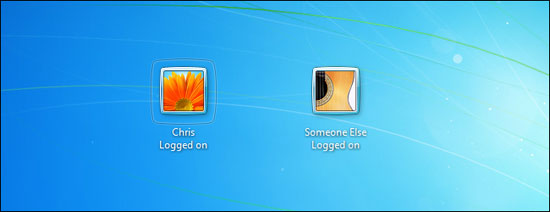
Part 1: Check history on Windows computer
1. Check recent activities in 'Jump Lists'
If you pay attention, you will see that current new versions of Windows 10 no longer display the list of recent activities on the system (except for newly installed applications) in the Start menu like before. (Skip to the next section below if you're running on an older release of Windows 10, or previous generation versions of Windows).
However, you can still easily check the list of recently accessed files on the system just by right-clicking on applications in the Start menu as well as the taskbar.
For example, do you want to check if someone has secretly opened your Word document? Launch the Microsoft Word application, open any document, then right-click on its icon on the taskbar and look at the ' Recent ' section in the context menu that appears. Here, you will see a complete list of recently opened document files on Microsoft Word, thereby easily detecting any abnormalities if someone secretly peeks at your documents.

You can do the same thing in the Start menu. Right-click any application that you think someone may have recently accessed, including web browsers. However, if you have set your browser to automatically delete your browsing history, nothing will show up.
Alternatively, you can also open File Explorer and see the list of recently accessed files in the ' Quick Access ' section.
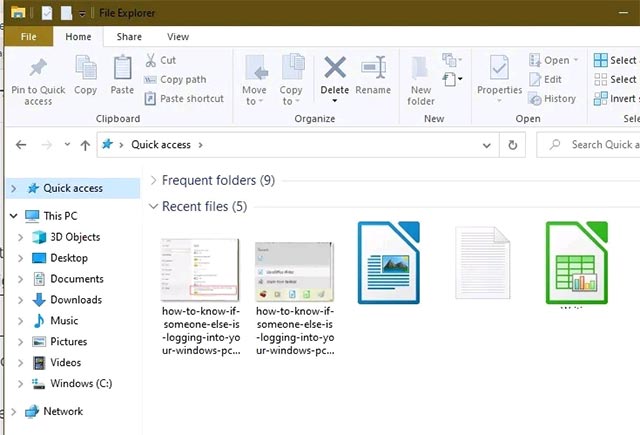
However, if this setting is not enabled by default, you will have to enable it manually by navigating to ' Start -> Settings -> Personalization -> Start '.
Press the switch to the left of the ' Show recently opened items in Jump Lists on Start or the taskbar and in File Explorer Quick Access ' option to turn it on.
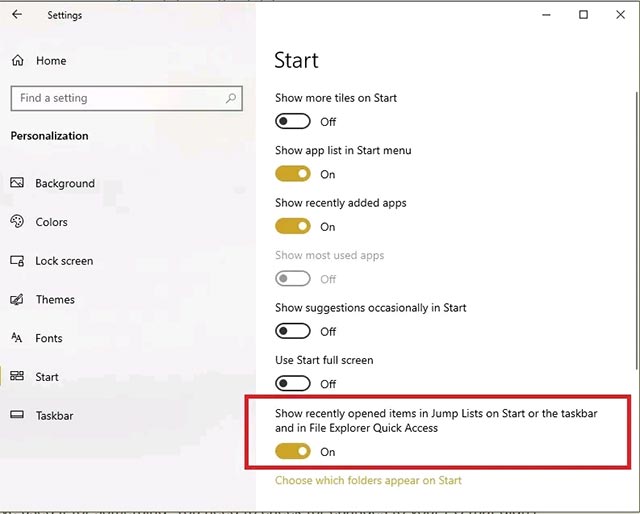
2. Check the Recent Activity list (old versions of Windows 10 and previous generation Windows)
On Windows 10, press Windows + E to open File Explorer, where you will view newly opened image files, compressed files, txt files, Word, Excel, and PowerPoint files.
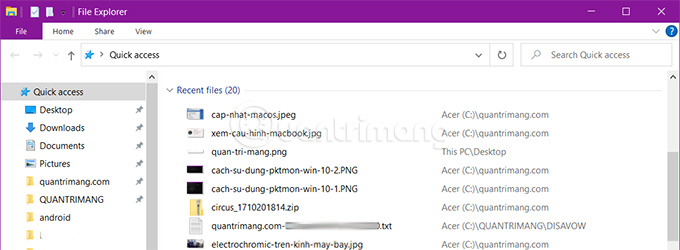
On Windows 7, you click Start Menu , and you will see a list of all recently opened programs, and if a strange program or one you haven't used before appears in this list, it's likely there. the person who opens your computer. Hover over the Recent Items section on the right side of the Start Menu and you will see a list of recently opened files.
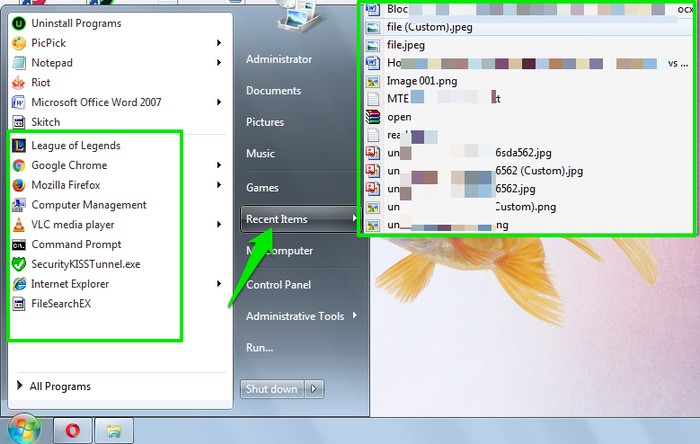
However, the limitation of this solution is that if an unauthorized person accessing your computer is smart enough, they can delete recent activities and recently opened files, so it is difficult for you to Detect whether your computer is being accessed and used by someone?
3. Check Windows Event Viewer
Windows will store a complete record of successful logon attempts as well as failed logon attempts. You can take advantage of this point to check if someone has accessed your computer?
To view successful or failed login attempts, access Windows Event Viewer.
To access Windows Event Viewer, first press the Windows + R key combination to open the Run command window, then enter eventvwr.msc there and press Enter or click OK to open the Event Viewer window.
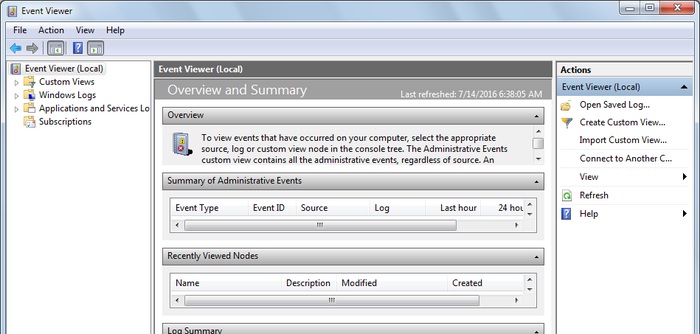
Monitor your computer when you are away
Here, double-click the Windows Logs button , then click Security . In the middle of the list you will see login attempts with login date and time. Each time you log in, Windows records logon attempts for the past approximately 2 to 4 minutes.
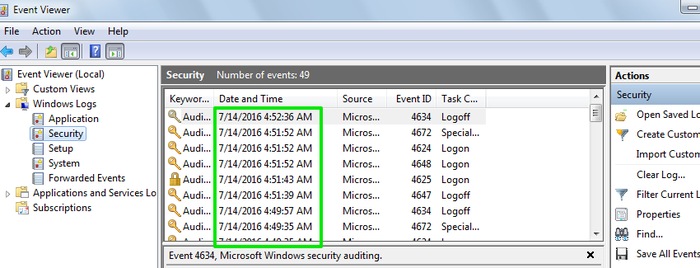
Additionally, you can check the specific account that has accessed your computer before (in case there are multiple accounts). To check, double click on the specific login, at this time the Event Properties window will appear on the screen. And you will see the account name next to Account Name .
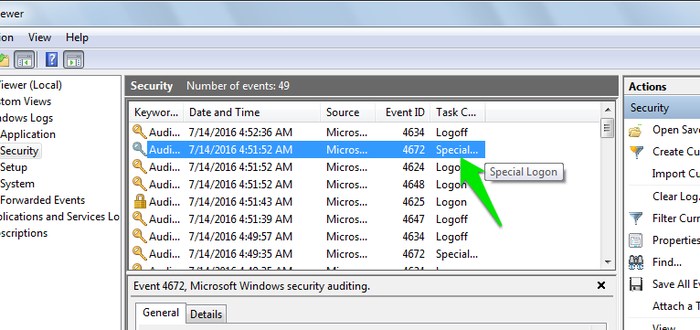
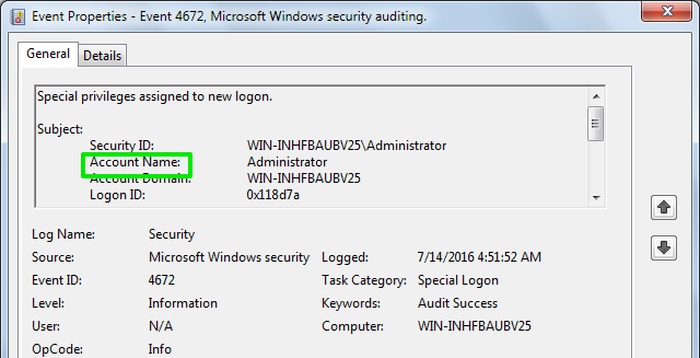
4. Display last login details
The last solution you can think of is to set up the display of login information details when the computer starts. This will display the account you used the last time you logged in, whether successful or failed.
You will have to edit the Windows Registry, so before doing so you should create a backup first.
Press the Windows + R key combination to open the Run command window, then enter regedit in the Run command window and press Enter or click OK to open the Windows Registry.
On the Registry Editor window, navigate by key:
HKEY_LOCAL_MACHINESOFTWAREMicrosoftWindowsCurrentVersionPoliciesSystemNext right-click on the System folder and select New => DWORD value to create a new DWORD and name this DWORD DisplayLastLogonInfo .

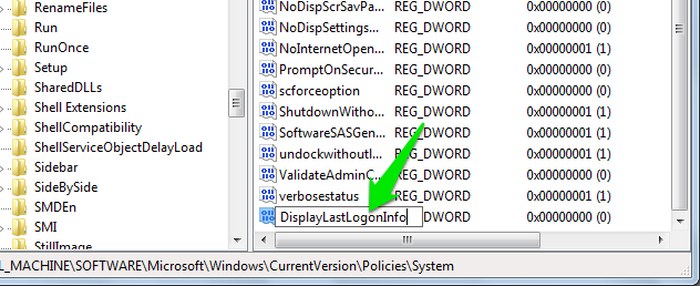
Double click on DisplayLastLogonInfo and set the value in the Value Data frame to 1 .
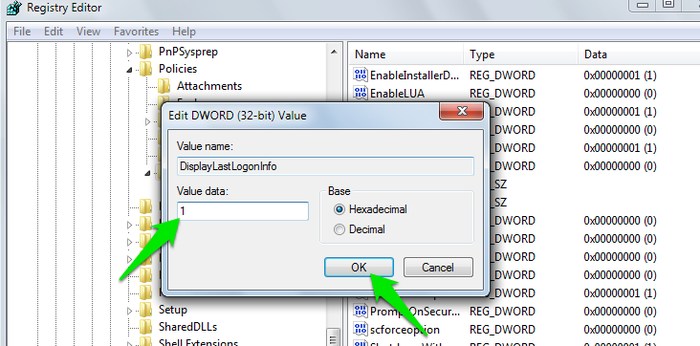
From now on whenever you log in to your computer, you will see details of your last login attempt and any failed login attempts.
5. Enable Logon Auditing
Note: Logon Auditing only works on Professional editions of Windows 7, 8 and Windows 10 and does NOT work on Home editions.
To enable Logon Auditing, first open Local Group Policy Editor. Press the Windows + R key combination to open the Run command window, then enter gpedit.msc there and press Enter to open Local Group Policy Editor.
Or another way is to enter gpedit.msc into the Search box on the Start Menu and press Enter .
Next on the Local Group Policy Editor window, navigate to the key:
Local Computer Policy => Computer Configuration => Windows Settings => Security Settings => Local Policies => Audit Policy
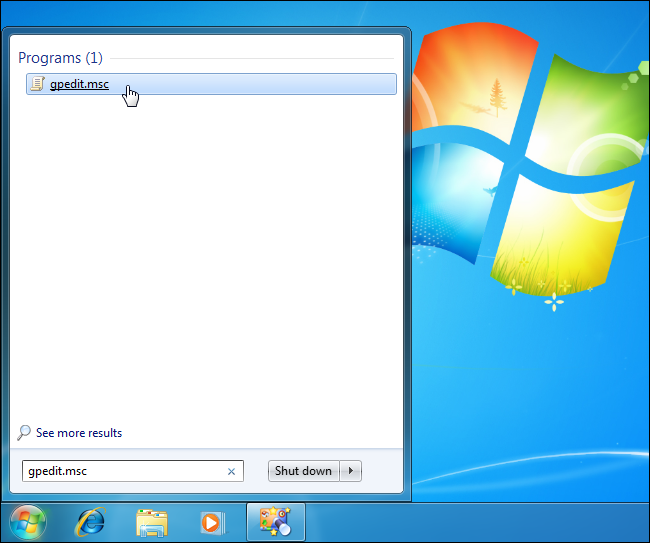
Double click on the Audit logon events policy setting in the right pane to adjust the options.
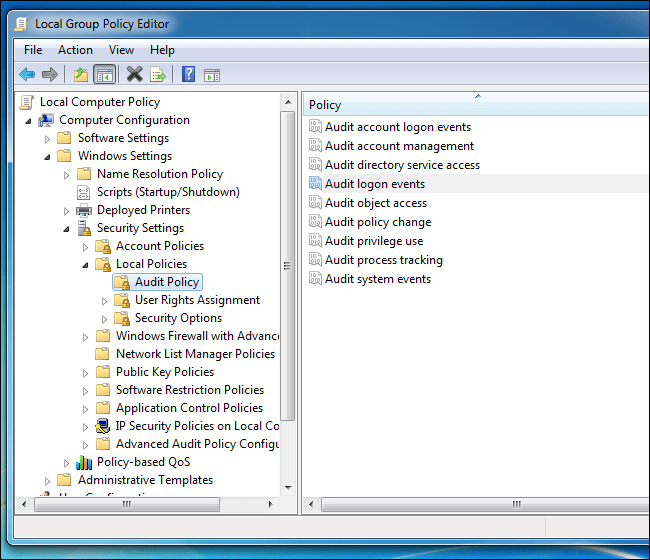
Next on the Properties window, check the Success box to display successful login. Additionally, you can check Failure to display failed login attempts.

6. Check recently used files
To check recently used files, open any application you use regularly and check the Open recent (or similar) option in the File menu . Not all applications have this option, but it will show users recently opened files, looking for files you don't recognize.
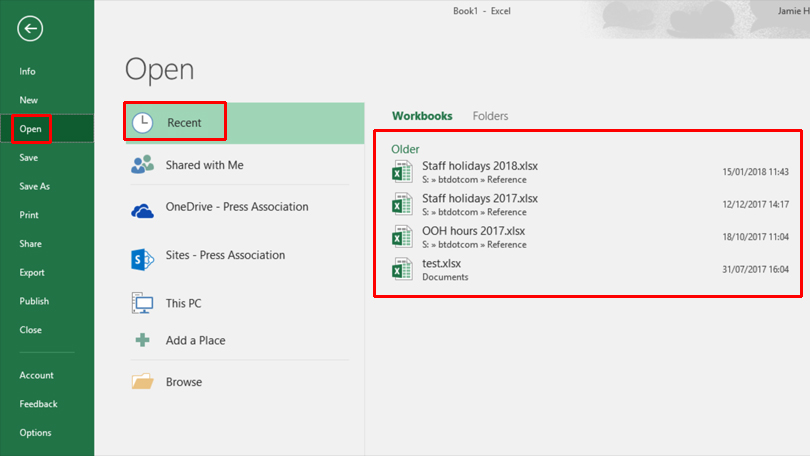
You can also search for files that were modified on specified dates. Open the window and enter a relevant word on the left side of the window, then select the Date modified option and select a date on the calendar that appears.
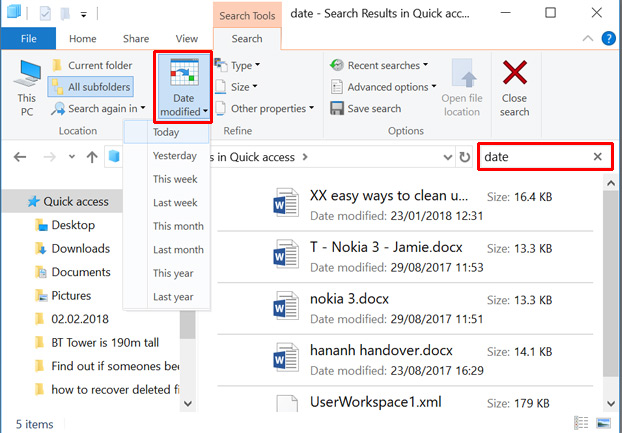
Windows will then search for all files in the Library folder that changed during that day. You can do the same in the C: drive, but Windows changes many files for general use, so doing this may not get the same results.
7. Check web browser history
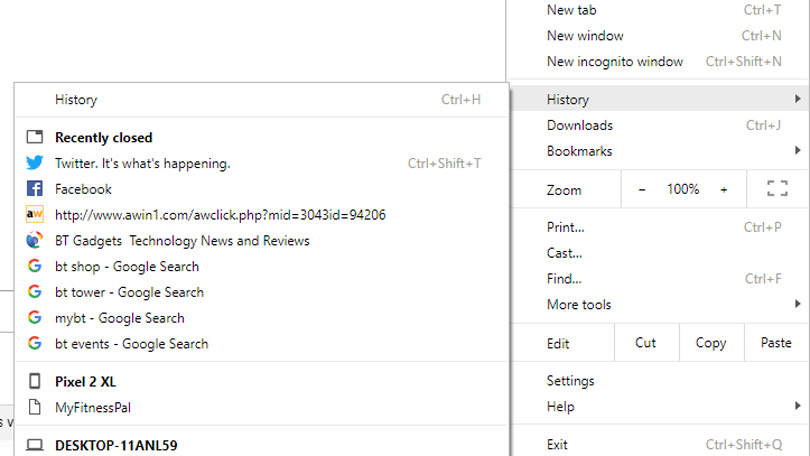
Finally, don't forget to check your web browser history. It will display a list of all recently opened and browsed websites by date. But one thing you need to keep in mind is that browsing history can be easily deleted, but you can completely trace deleted browsing history.
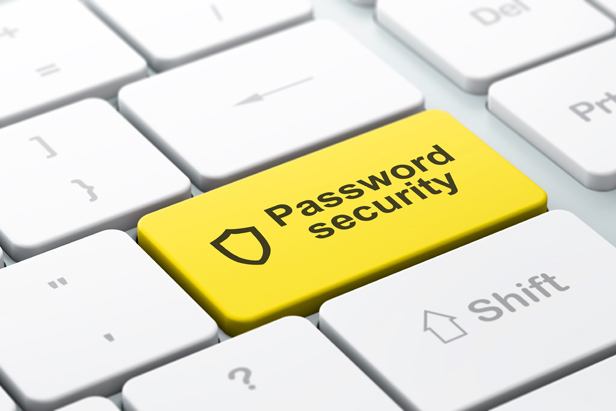
The best way to prevent someone from using your computer is to set a Windows user account password. Then whenever you leave your computer but don't want to turn it off, press Windows + L to lock the screen.
Part 2: Check activity history on Mac
On a Mac OS computer, you can only check if anyone is using your computer when you leave it and it is in Sleep mode , meaning it only saves wake-up activities. computer from Sleep mode . You can follow these steps:
Open the Console dialog box by pressing Command + Spacebar, or click on the Spotlight icon and search for it. Type the word "wake" into the search bar, then scroll down to the bottom of the list and you'll find the most recent logins.
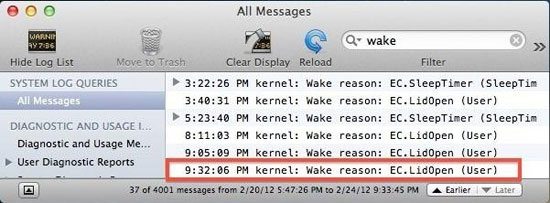
A few simple, yet effective tips to help you check on people using your computer when you're not there. This is quite useful for controlling your children's or young children's computer usage, but in other cases you should set a password for your computer to ensure safety.
Refer to some more articles below:
Good luck!
You should read it
- MS Word - Lesson 17: Track Changes tool
- How to Build an RC Track
- TRACK CHANGES FEATURES IN WORD
- The Do Not Track feature will be deleted from the Safari browser
- How to Set the Default Audio Track in VLC
- Android users easily become victims of AirTag tracking without even knowing it hay
- Facebook Container, Facebook blocking extension to track Mozilla users
- Word 2016 Complete Guide (Part 24): How to use Track Changes and Comments
May be interested
- How to Delete History on Your Computer
 this wikihow teaches you how to delete your computer's file history, which includes things like recently viewed files and search suggestions. you can do this on both windows and mac computers. to clear web-based history, you'll need to...
this wikihow teaches you how to delete your computer's file history, which includes things like recently viewed files and search suggestions. you can do this on both windows and mac computers. to clear web-based history, you'll need to... - See the wonderful images of the world's first computer layout
 let's tipsmake.com review the first computers appeared in the world - the machines marked a great progress of science and technology in human history!
let's tipsmake.com review the first computers appeared in the world - the machines marked a great progress of science and technology in human history! - Ways to check computer performance
 in this article tipsmake.com synthesizes 5 most popular tools to check computer performance as well as individual advantages of each tool for reference readers.
in this article tipsmake.com synthesizes 5 most popular tools to check computer performance as well as individual advantages of each tool for reference readers. - History of computer development
 computers are a tool to help people quickly solve math problems that need high computational skills and have gone through many technological advances, from large computers that occupy the entire room to the present. hands and can carry easily.
computers are a tool to help people quickly solve math problems that need high computational skills and have gone through many technological advances, from large computers that occupy the entire room to the present. hands and can carry easily. - 4 simple ways to check the configuration and hardware information of computers and laptops
 to check the computer configuration information on windows xp, vista, 7, 8 / 8.1 and windows 10 you can use the dxdiag command on cmd, look at the pc's properties or use support software. in the article below, tipsmake.com will guide you how to check, see the hardware configuration on the computer quickly, simply but still ensure to provide enough computer information needed.
to check the computer configuration information on windows xp, vista, 7, 8 / 8.1 and windows 10 you can use the dxdiag command on cmd, look at the pc's properties or use support software. in the article below, tipsmake.com will guide you how to check, see the hardware configuration on the computer quickly, simply but still ensure to provide enough computer information needed. - How to check the history of printed documents on Windows 10
 check your printer history to see what has been printed slightly difficult to track. by looking at the amount of ink you cannot know how many documents have been printed. you need to enable printing log in windows 10 and this is how to do it.
check your printer history to see what has been printed slightly difficult to track. by looking at the amount of ink you cannot know how many documents have been printed. you need to enable printing log in windows 10 and this is how to do it. - How to delete last camera access history on Windows 11
 if an app has accessed your camera, it will show you the last time it accessed it. here's how to find out when it last accessed your camera on windows 11.
if an app has accessed your camera, it will show you the last time it accessed it. here's how to find out when it last accessed your camera on windows 11. - Check if your computer supports running PC games
 you own a laptop with a weak graphics hard drive or an old pc, it is important before deciding to spend a large amount of money on upgrading your computer, check that your computer can support the game. play it or not.
you own a laptop with a weak graphics hard drive or an old pc, it is important before deciding to spend a large amount of money on upgrading your computer, check that your computer can support the game. play it or not. - The simplest way to check IP address on computer, check IP in LAN
 an ip address is the address that devices such as computers or phones use to identify and communicate with each other. simply put, if you know the ip address of a computer, you can connect to that computer using certain software. here's a simple and easy way to check the ip address on your computer.
an ip address is the address that devices such as computers or phones use to identify and communicate with each other. simply put, if you know the ip address of a computer, you can connect to that computer using certain software. here's a simple and easy way to check the ip address on your computer. - Top 5 Simple and Accurate Ways to Check Computer Mainboard
 checking the computer mainboard is an important step when upgrading hardware to help choose the right components. let's explore the details with hacom here.
checking the computer mainboard is an important step when upgrading hardware to help choose the right components. let's explore the details with hacom here.










 How to delete junk files and clean your computer to run faster
How to delete junk files and clean your computer to run faster How to open camera on Windows 7/8/10/11 laptop
How to open camera on Windows 7/8/10/11 laptop How to fix sound errors on Windows 10, fix Windows 10 sound errors
How to fix sound errors on Windows 10, fix Windows 10 sound errors How to copy, delete, move, rename files/folders using PowerShell on Windows PC
How to copy, delete, move, rename files/folders using PowerShell on Windows PC 8 effective ways to check your hard drive to periodically check the health of your hard drive
8 effective ways to check your hard drive to periodically check the health of your hard drive Do you know how to check copyrighted Windows or 'pirated' Windows?
Do you know how to check copyrighted Windows or 'pirated' Windows?